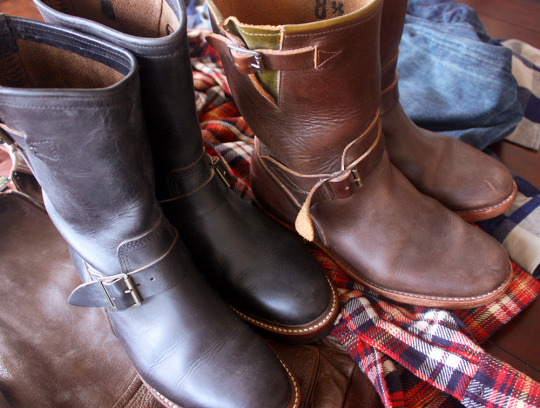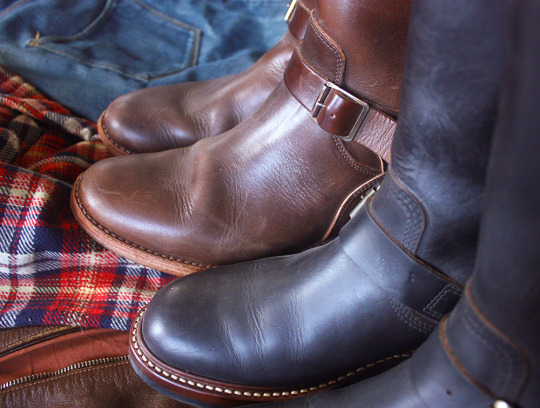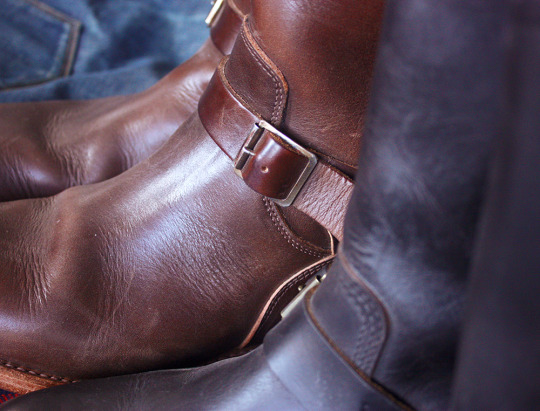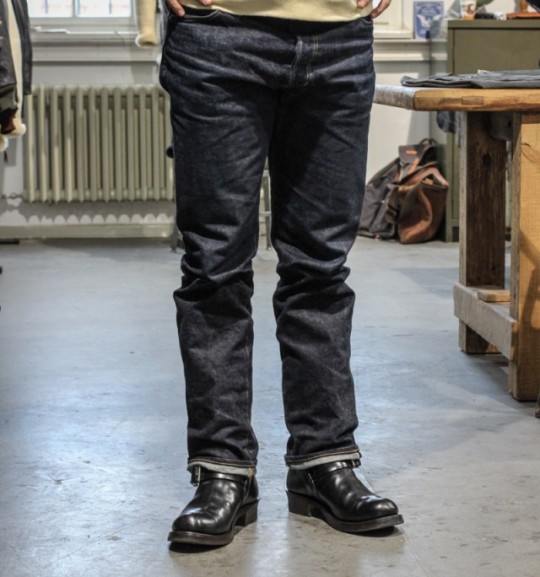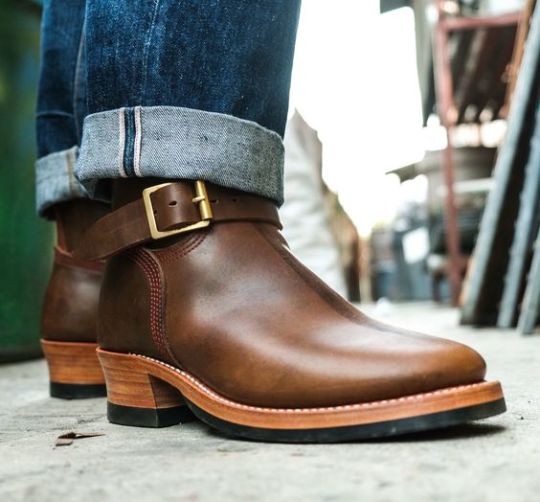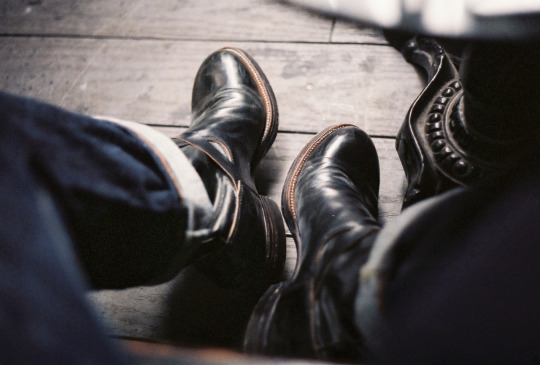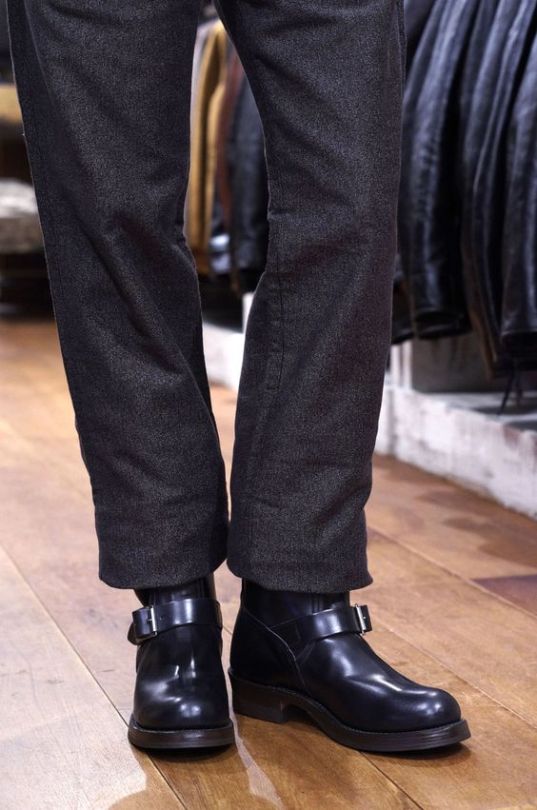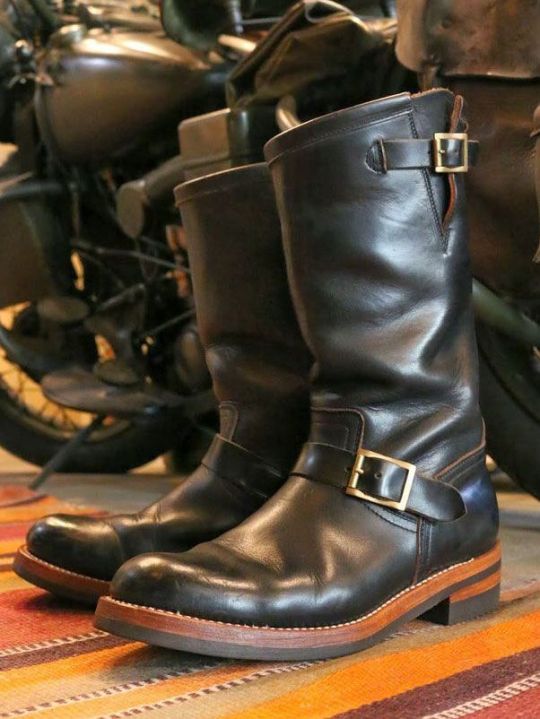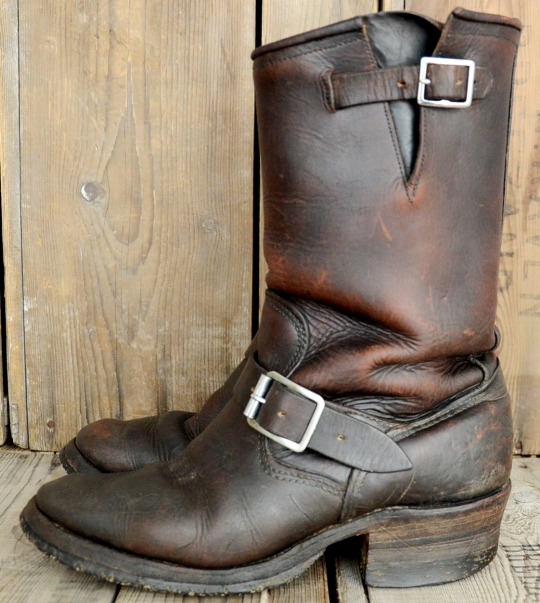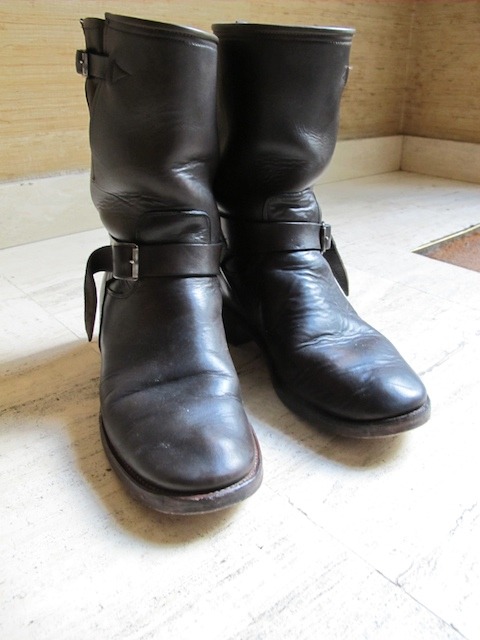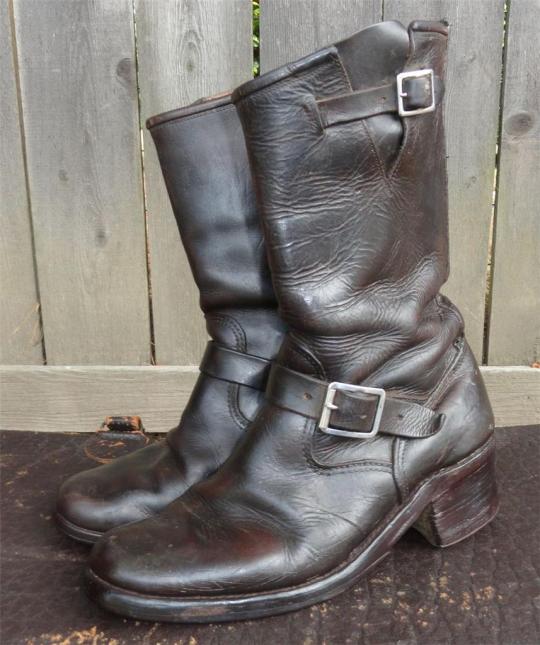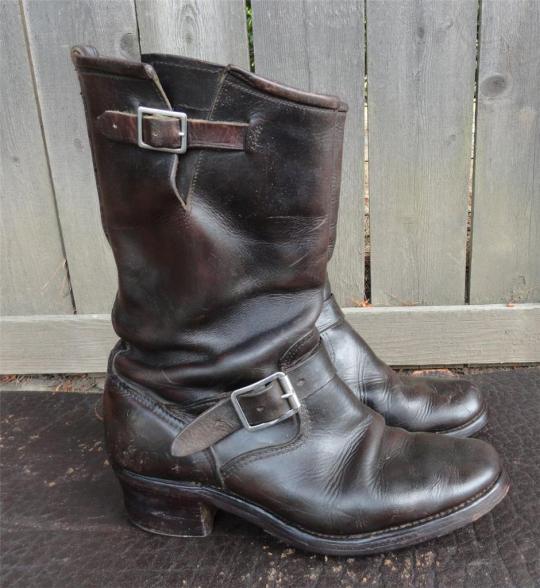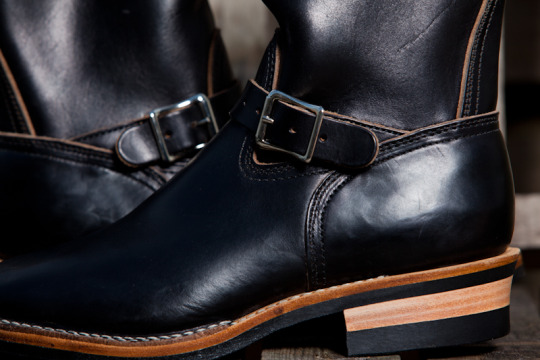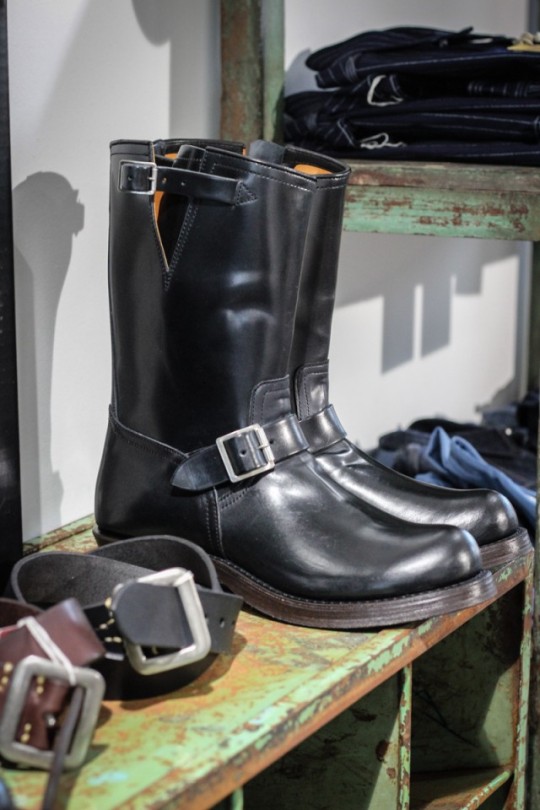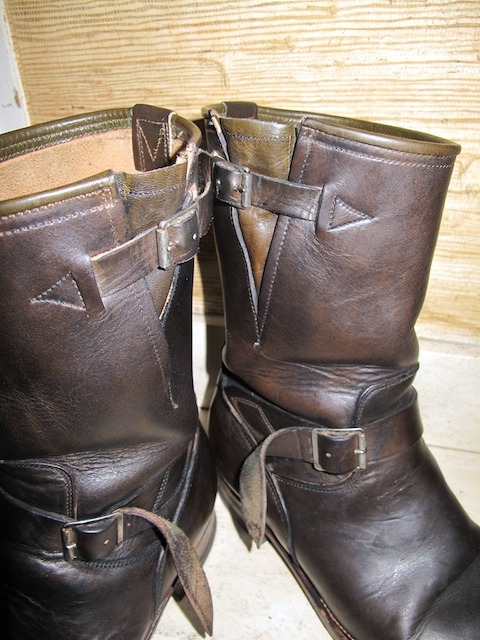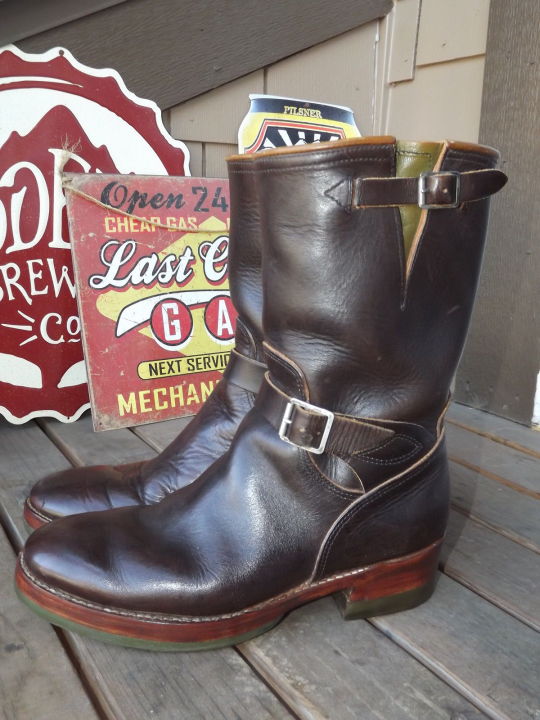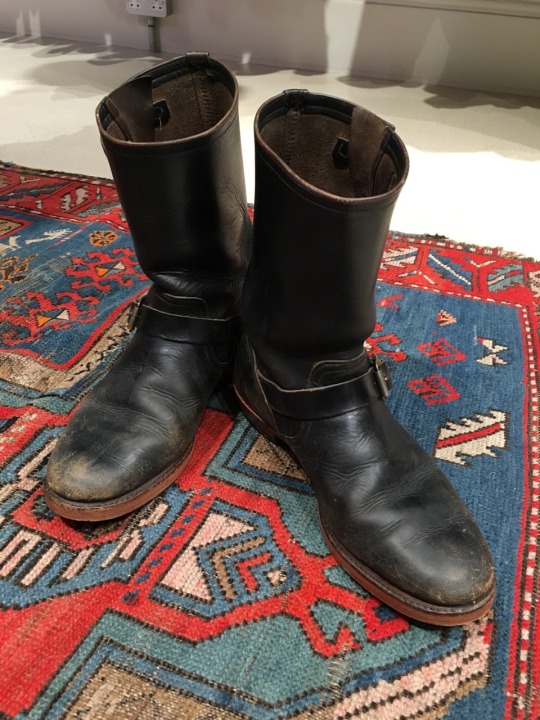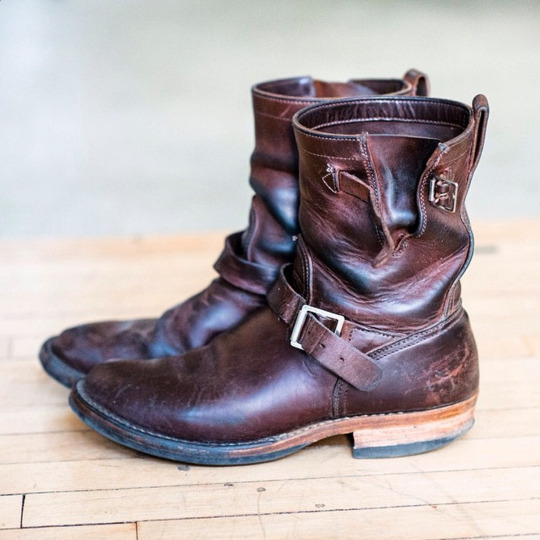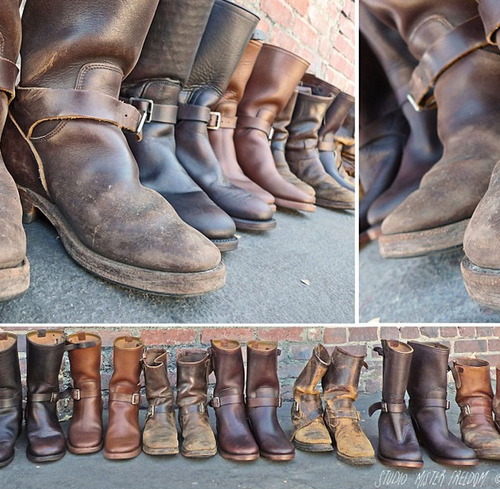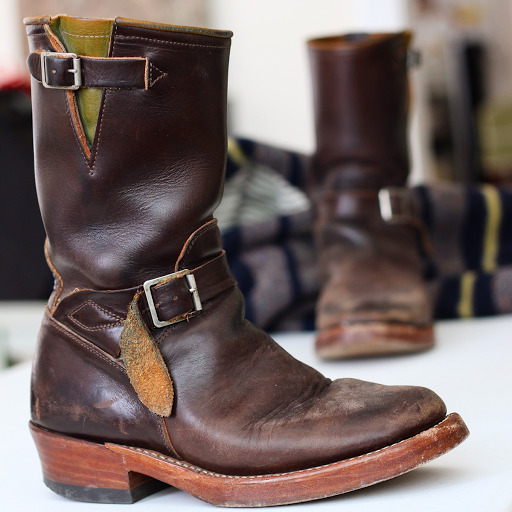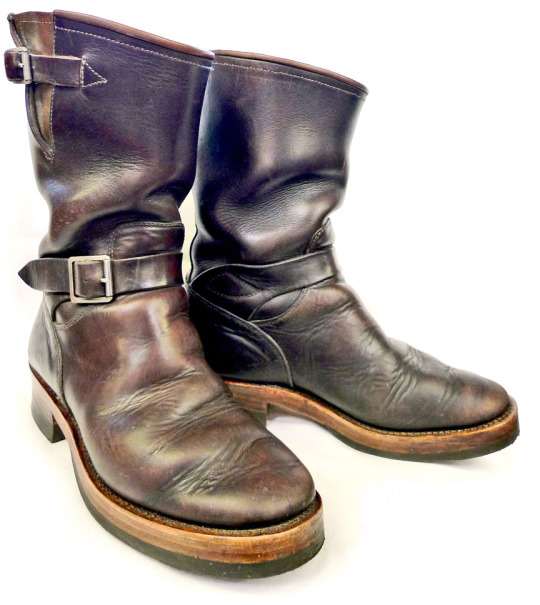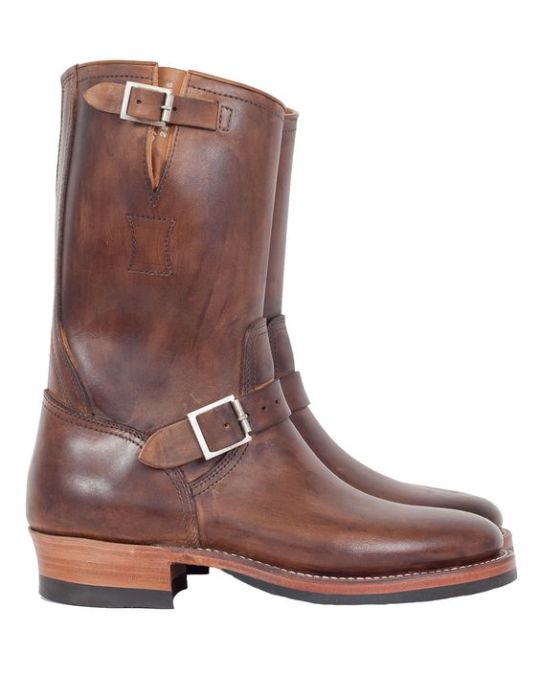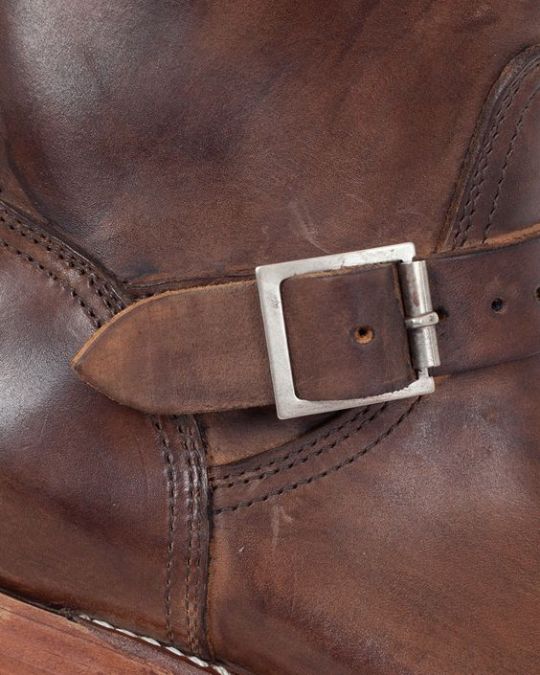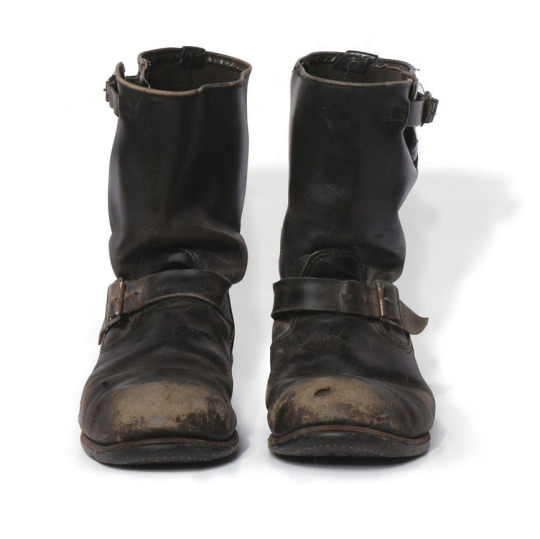
These boots have been sitting in my closet for a while. I bought them a couple of years ago when I was getting into heavy horsehide jackets and flannel shirts. These days, when I’m not in sport coats, I’m usually wearing more contemporary takes on casualwear – or off-beat riffs on classics – but when it was raining heavily last week, I broke out my engineer boots again.
Much like the five-pocket jean and oxford shirt, the engineer boot is an American classic. A Heddels writer once described them as having the ruggedness of Pacific Northwest logging footwear, but the simplicity of English riding boots, which sounds about right. Engineer boots are defined by their tall, stove-pipe shaft and roller-buckle ankle strap (often accompanied by a similar strap around the calf). The style was originally worn by railmen – particularly those who shoveled hot coals into engines – because they offered protection from sharp shovels and fiery embers.
Like a lot of workwear, engineer boots became popular as everyday, casual garb around the 1950s, when more rugged styles were adopted by youths and returning veterans seeking to carve out new identities (ones that defined them as separate from the flannel-suit-wearing elites). Members of motorcycle clubs first started wearing them as part of their double-rider uniform, as the smooth design ensured that no shoestrings would get caught in their bikes. Later, Marlon Brando and James Dean helped spread this look through their various movie roles, which is what made them popular with youths. By the end of the decade, engineer boots carried a sort of bad-ass connotation that has stayed with them to this day.
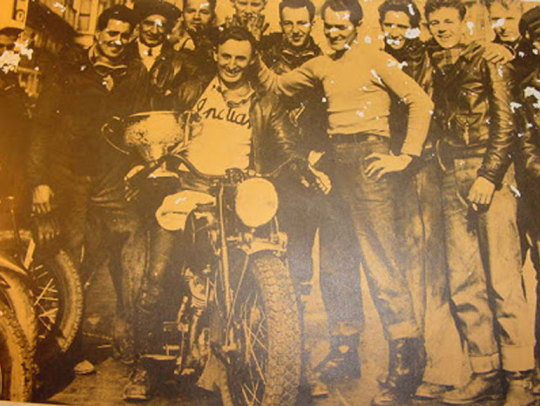
The style goes great with vintage-inspired forms of American workwear – rugged leather jackets, denim trucker jackets, and Army field jackets. I like them with heavy chinos and jeans, particularly worn with a large cuff, but you have to find a pair with a wide enough leg (I wear mine with Chimala and Stevenson Overall Co jeans). Perhaps best of all, when everyone these days is wearing generic work boots, engineer styles make more of a statement – even if only the buckle strap is showing beneath the cuff. You’d be surprised at how much better a basic uniform can look with more interesting footwear.
You can find engineer boots at all sorts of places. Traditional work boot manufacturers still sell them, such as Red Wing, Wesco, and Chippewa. Standard & Strange right now has a pair of Red Wing engineer boots made from what’s known as “tea core” leather – a black leather with a brown base, which gives a deeper, more interesting color once the surface wears down. If I were to buy another pair right now, they’d probably be those. Additionally, Ralph Lauren, while not a traditional maker, is worth a look. They have some nice ones through their RRL subline.
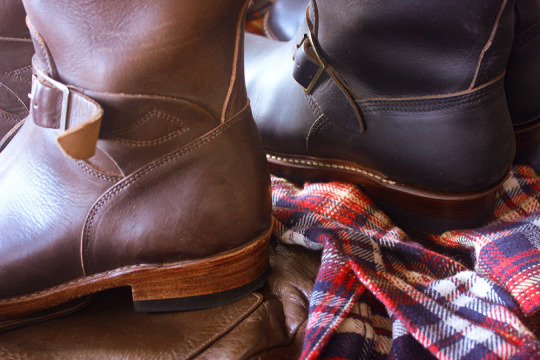
There are also a bunch of niche producers who cater to vintage-style enthusiasts. Mine, pictured above, are from John Lofgren and Mister Freedom. The first makes fully Japanese-made engineer boots with Western-sourced materials. I like that they have a storm welt and shapely heel, although I also find that my feet slips out a bit more easily because of that heel curve (you can see the difference between the two above). The Mister Freedom Road Champs are nice in that the leather is painted with three layers of color, which give them a unique, heavily patina’d look once worn.
Over at Role Club and Clinch – two shoe repair shops turned footwear manufacturers – you’ll find handwelted engineer boots, which takes the best of traditional shoemaking techniques and applies them to workwear. And while I favored partially structured or unstructured toe boxes, such as these from Viberg and Hollywood Trading Company, you can find engineer boots with a more upturned toe from Ace Boots and The Real McCoys.
You don’t have to ride a motorcycle these days to wear engineer boots (almost all clothes are divorced from their original, utilitarian purposes), but they do pair better with more vintage-inspired workwear. I admittedly haven’t worn mine in a while, but last week – when the rain was coming down and I didn’t feel like putting on LL Bean boots – these seemed perfect. In some ways, vintage workwear isn’t too different from classic tailoring. When worn well, it makes you look great without seeming overly fashionable. The only difference is that you can beat these up around a bit more.

